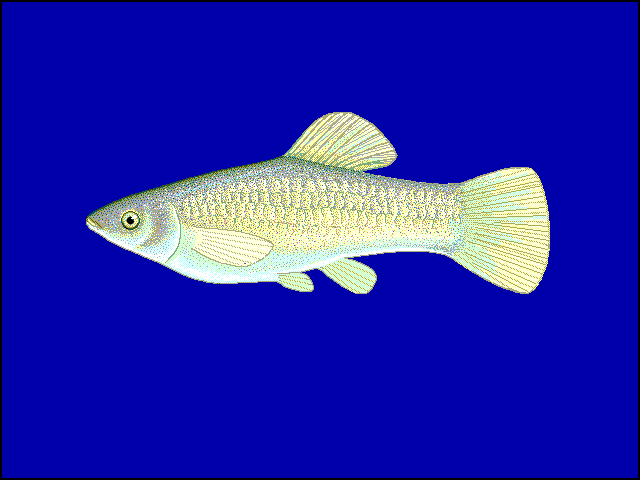Institut de Biologia Evolutiva - CSIC UPF
In spite of odds, fish species that bypasses sexual reproduction is thriving
Animals that reproduce asexually are expected to be at an evolutionary disadvantage compared to their sexual counterparts. However, research with the participation of Tomàs Marquès-Bonet, ICREA research professor at the UPF and director of the IBE, and Raquel García Perez, researcher at IBE, shows this is not true to the Amazon molly. These findings have been published in the journal Nature Ecology & Evolution.
 The very rare animals that reproduce asexually ―only about one thousand of all living vertebrate species― are thought to be at an evolutionary disadvantage compared to their sexual counterparts. One of the theories that spell this out is the idea that if no new DNA is introduced during reproduction, then harmful gene mutations can accumulate over successive generations, leading to eventual extinction. Another hypothesis states that because asexual reproduction limits genetic diversity within species, the animals eventually become unable to adapt to changes in the environment. These theories, however, do not hold true to the Amazon molly (Poecilia formosa), an all-female fish species that has thrived for millennia in the fresh waters along the Mexico-Texas border.
The very rare animals that reproduce asexually ―only about one thousand of all living vertebrate species― are thought to be at an evolutionary disadvantage compared to their sexual counterparts. One of the theories that spell this out is the idea that if no new DNA is introduced during reproduction, then harmful gene mutations can accumulate over successive generations, leading to eventual extinction. Another hypothesis states that because asexual reproduction limits genetic diversity within species, the animals eventually become unable to adapt to changes in the environment. These theories, however, do not hold true to the Amazon molly (Poecilia formosa), an all-female fish species that has thrived for millennia in the fresh waters along the Mexico-Texas border.
To better understand how this fish’s reproduction deviates from the norm, an international team of scientists has sequenced the first Amazon molly genome and the genomes of the original parental species that created this unique fish. Their findings suggest that the molly’s thriving existence is not totally unexpected since they found it has a hardly genetic makeup that is often rare in nature and gives the animals some predicted survival benefits. The results of this research have been published in the journal Nature Ecology & Evolution, and among its authors are Raquel García Perez, predoctoral researcher at IBE, and Tomàs Marquès-Bonet, ICREA research professor at the UPF and director of the IBE.
The Amazon molly was the first asexual vertebrate discovered in 1932. It reproduces by “mating” with a male fish of a related species. The male’s DNA is not incorporated, however, into the offspring. Instead, mating with the male fish triggers the replication of the entire maternal genome. In essence, mollies clone themselves. They do not lay eggs but give birth to large broods of live offspring instead.
Scientists have long theorised that clones, by failing to purge harmful mutations, should experience decay in the genome and eventual extinction over generation. Despite these expectations, “in nature it is doing quite well”, said first author Wesley C. Warren, assistant director at McDonnel Genome Institute at Washington University School of Medicine in St. Louis.
The researchers found that the Amazon molly resulted from a sexual reproduction event involving two different species of fish, when an Atlantic molly first mated with a Sailfin molly 100,000 to 200,000 years ago. Since then, the resulting Amazon molly has been a hybrid species that remarkably has remained frozen in evolutionary time ―yet still continuing to thrive. “That is about 500,000 generations if you calculate it out to the present day”, Warren stated. The expectation is that many harmful mutations would accumulate in that time, but that is not what they found. “The Amazon molly shows few harmful mutations, low genetic decay levels and a unique and in constant evolution variability ―mainly in genes related to the immune system”, Raquel García Perez said. “Such features could explain the evolutionary success of the Amazon molly”.
Reference article: Warren W.C. et al. Clonal polymorphism and high heterozygosity in the celibate genome of the Amazon molly. Nature Ecology & Evolution, Feb. 12, 2018 DOI: 10.1038/s41559-018-0473-y
